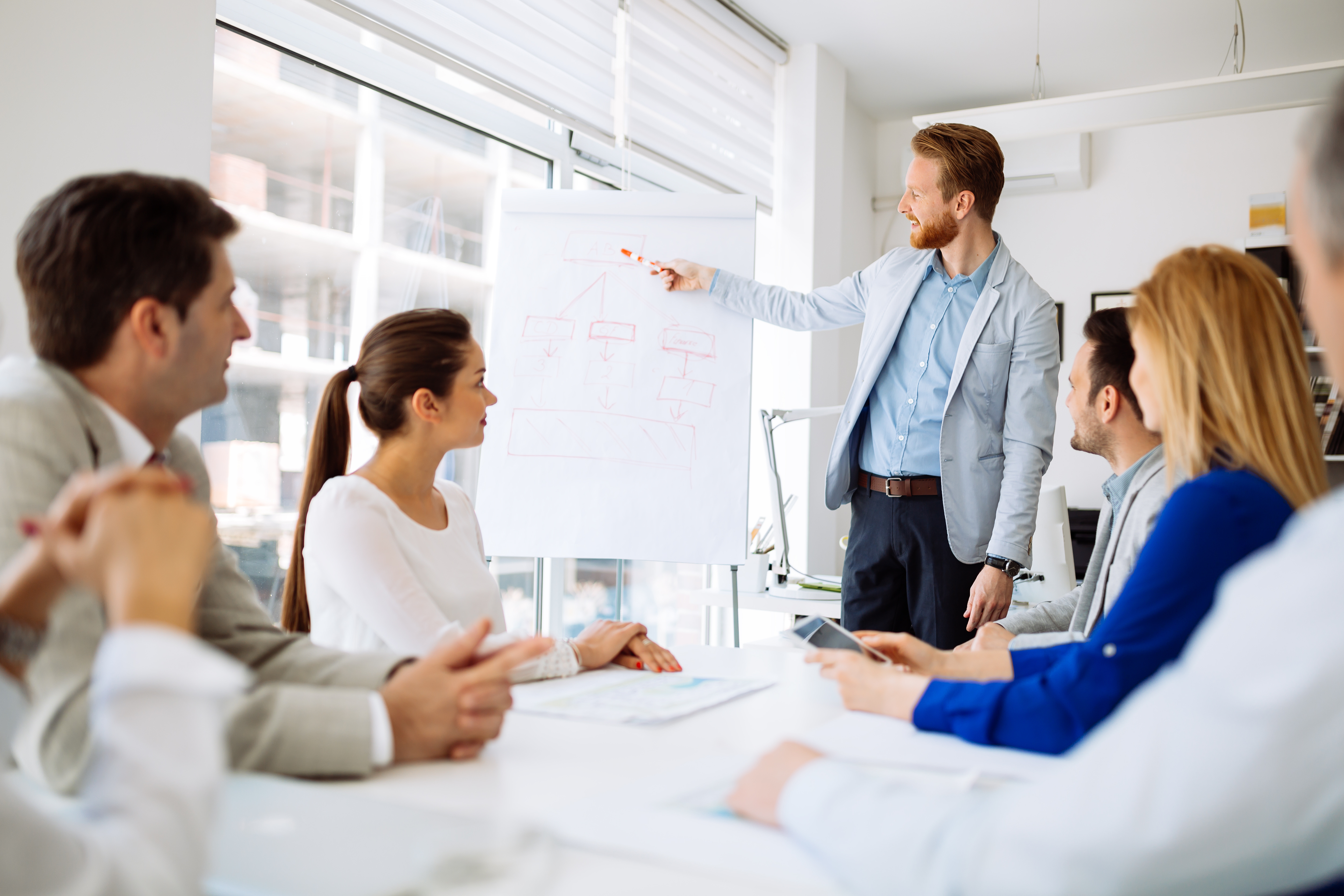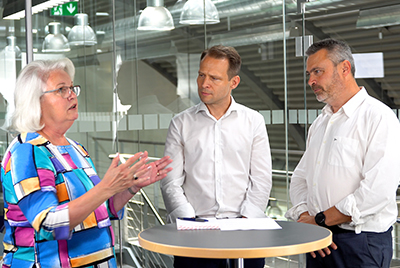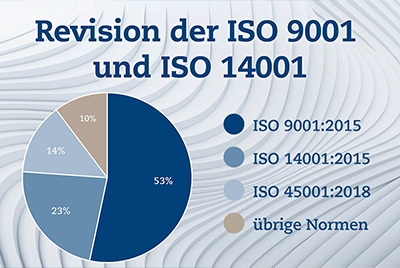Revision of ISO 14001
In 2026, the International Organisation for Standardisation (ISO) will publish a revised version of the globally established standard for environmental management systems, ISO 14001. This is the first revision since 2015, addressing current environmental challenges such as climate change, resource scarcity, biodiversity loss and pollution, and thus taking into account the requirements of users, other interested parties and the planetary boundaries.
Key expected changes in ISO 14001:2026
The changes outlined below are based on the draft ISO 14001:2015/DAM 2:2025, which is currently being reviewed and approved by the relevant committees. Until ISO 14001:2026 is officially published, changes to the content are still possible, but are not expected to be significant.
-
Alignment with the currently valid Harmonised Structure (HS) for ISO Management System Standards (MSS) to standardise terminology and structure.
-
Revision and clarification of existing requirements to make them more practical and easier to understand. Inclusion of additional comments for better guidance.
-
Permanent integration of the supplement on climate-related measures introduced in 2024 (ISO 14001:2015/Amd1:2024). In addition to climate change, other environmental aspects such as the availability of natural resources, biodiversity, and the health of ecosystems are also addressed.
-
Clearer structuring and reorganization of the existing requirements in Chapter 6.1 Actions to address risks and opportunities.
-
Addition to chapter 6.3 Planning of changes from the harmonised structure.
-
The guidelines in Annex A have been revised to improve the understanding of the key requirements. They enable users to interpret the intention of the requirements for an environmental management system (EMS) more clearly and to implement them accordingly in an appropriate manner. On this basis, it is the responsibility of the organisation to identify the scope of possible system gaps and to ensure that the requirements of ISO 14001:2026 are met.
As things stand at present, these are generally moderate adjustments without any fundamental reorientation. However, the amended appendix must be given the necessary attention.
ISO Revision Procedure
The updating and further development of ISO management system standards follow a clearly structured, international process based on the ISO directives. The aim is to ensure that standards always meet current practical requirements, stakeholder expectations, and global challenges.
A key element is the mandatory review of every ISO management system standard no later than five years after its publication. As part of this review, a decision is made as to whether the standard should be confirmed, amended, revised or withdrawn. This decision is based on a comprehensive analysis of its application to date and feedback from the field.
Valuable inputs are provided by the international user surveys conducted by the Technical Committees. These surveys capture the experiences, strengths, weaknesses and needs of users and stakeholders worldwide. The results of the surveys are directly incorporated into the decision-making process for the further development of the standards.
A further step is the «ISO Design Specification Process». Here, the scope, project plan and framework conditions for each revision are defined. The «Design Specification» is internationally coordinated and contains the framework and requirements for the actual revision of the standard for the appointed expert group.
After completion of each revision, a final review is carried out. This review checks whether the defined objectives have been achieved and what insights have been gained from the revision process. These learning experiences are documented and serve as a basis for future improvements in the standardisation process.
These systematic and transparent mechanisms ensure that ISO management system standards are continuously developed and adapted to new challenges – in the interest of all certified organizations and their stakeholders.
Publications and transitional arrangements
The International Accreditation Forum (IAF) will publish binding guidelines for the conversion of existing certificates to the revised standard. SQS will inform its customers as soon as the relevant information is available. The transition period is usually three years.
|
Milestone |
ISO 14001:2026 |
|
Draft standard (DIS / DAM) |
No DIS or ISO 14001:2015/DAM 2:2025 documents are planned for official publication.* |
|
Publication of final draft standard (FDIS) |
January - February 2026 |
|
Publication of standard (IS) |
March – April 2026 |
|
Transition periods of IAF |
Not yet known |
Draft Amendmend (DAM), Draft International Standard (DIS), Final Draft International Standard (FDIS), International Standard (IS)
*) According to the design specification for the ISO 14001:2015 revision, a ‘limited revision’ was commissioned with an amendment ‘ISO 14001:2015/DAM 2’. During the revision process, for reasons of practicality for users (overall overview of all requirements in one document), it was decided in July 2025 to publish a consolidated new edition ISO 14001:2026 in addition to the amendment with the listed changes. In this case, the ISO directives allow a consolidated version from the FDIS stage onwards. The amendment list will continue to be maintained in WG15 as a shadow activity. Once the comments from the international consultation have been addressed, a consolidated FDIS will be published.
In Switzerland, the new standards can be obtained and licensed from the Swiss Standards Association (SNV) once they have been published.
They are an important basis for users to further develop their management system.
Conversion of the management system
To prepare for the changeover to the new standard, we recommend that our customers take the following steps:
#1 – Check changes
Get an early overview of the changes in the revised standard, for example from the FDIS (Final Draft International Standard) stage onwards.
#2 – Observe the deadline
From the date of publication of the new standard, a transition period of three years generally applies. SQS customers may make the adjustment of their certification documents as part of a regular surveillance, recertification or extraordinary surveillance audit. A certain additional effort must be expected for the assessment of the changed requirements.
#3 – Promote understanding
Ensure that all relevant stakeholders are trained and understand the new features and clarifications.
#4 – Analysis and implementation plan
Analyse potential gaps in the existing management system, derive the necessary measures and develop a structured implementation plan.
#5 – Adjust system
Make the necessary adjustments and update your management system.
#6 – Internal audit
Verify successful implementation as part of your internal audits.
#7 – Plan an audit with SQS
Coordinate the upcoming audit activities with SQS after publication of the IS.

With a deliberately focused range of services, SQS supports its customers in the effective implementation and application of the new requirements:
-
SQS live webinars on standard revision from FDIS level onwards (expected from March 2026)
-
Transition process within the framework of joint audit planning



